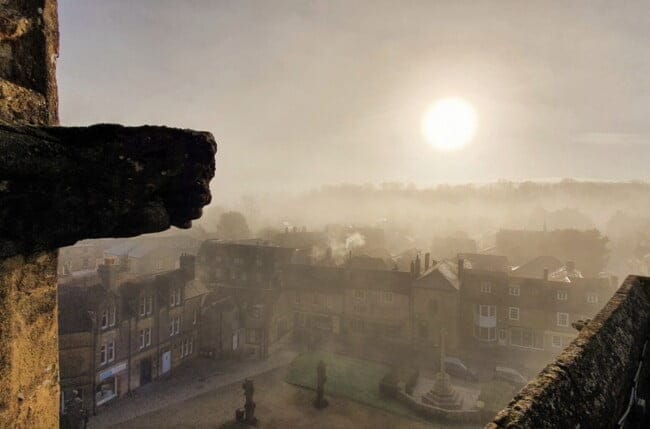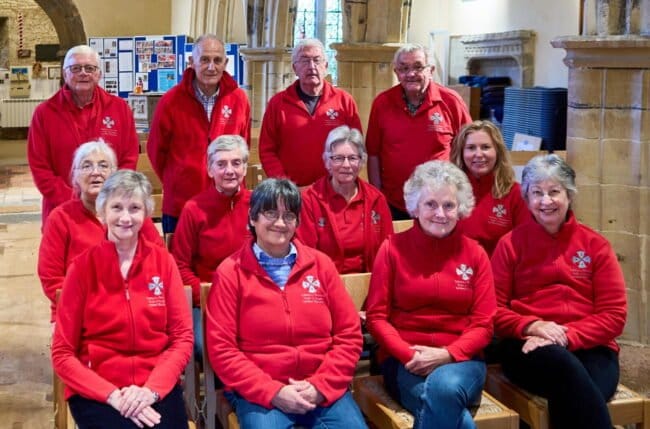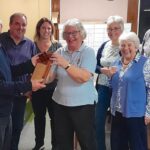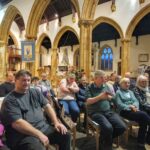The village of Lytchett Matravers, located on a small hill a few miles north of Poole Harbour, is something of an anomaly. The village centre, now mostly comprised of modern housing estates built between the 1950s and the present day, bears no resemblance to the settlement mentioned in history books. Furthermore, those looking to visit the church for the first time, or grab the bells on a ringing outing, tend to have difficulty finding it. So where is it? The answer is almost half a mile outside of the village, on a quiet, rural lane. The church, now only surrounded by fields, appears to rise out of nowhere. What’s it doing there, and why is it so far away?
The reason is Lytchett Matravers is a local example of a ‘plague village’. In 1349, when the Black Death entered Britain through the port at Melcombe Regis (modern day Weymouth), it spread fast and was lethal. Churchyards quickly became overwhelmed with the dead, and villagers panicked. Churches were seen as the centre of the epidemic, and in several places, including at Lytchett, the surviving villagers abandoned the old village, the church, and the manor, and moved themselves half a mile uphill to the site of the present village. The modern village still follows these outlines, it has expanded away from the church, rather than towards it.
The Church of St Mary the Virgin, now isolated physically from the village, is a Grade I listed Gothic structure, built between 1200 and 1500. The tower is the oldest part of the church, built in the 13th century, and apart from four, small, pierced louvres in the top stage, has an unusually small amount of windows. The early history of the bells is sketchy, at best. In 1552, three medieval bells are recorded, of which the treble of those bells, cast in 1400 by the Salisbury Foundry, is the sole survivor. In 1616, the second was recast by John Wallis of Salisbury, followed by the tenor in 1684 by John Tosier, also of Salisbury. These three bells now form the back three of today’s ring of six, which were formed in 1931 by Mears and Stainbank of Whitechapel, London.
In 1931, the three bells were dismantled and removed from the tower, retuned at Whitechapel, and rehung with new imported elm headstocks and ball bearings, in a new two-tier cast iron frame together with three newly cast treble bells, to make six. Fast-forward to the mid-2010s when a brand new band was being taught on the bells; it was realised that the condition of the bells and their fittings was making things difficult. The elm headstocks had cracks, shakes and splits in them which made the bearings out of alignment, the bells were all chronically oddstruck, and some of the bells were becoming, despite their small size, hard work for even experienced bands to ring.
If the teaching and the development of a new band were to be successful, the bells had to be restored. £30,000 was raised through the hard work of the local band and supporters, and in November 2019, the bells returned from John Taylor & Co in Loughborough, with brand new fittings throughout. The frame was painted, strengthened and repaired, mostly done by the local band to save money. The precarious access ladder to the belfry (those of us who were forced to use it before the restoration can testify to its danger!) was also replaced with more substantial, properly designed, and health & safety-compliant, ladders.
As a result, the tower now possesses a smart-looking, easy-to-ring, pleasant-sounding, light six. Augmented by the use of simulator technology it is one of the county’s most valuable assets when it comes to teaching. A warm welcome is always provided on practice nights, which are on Friday evenings between 17.00 and 19.00.
Jack Pease



![New clappers, which were carefully illustrated by a local signwriter and dedicated to people and places significant to the bells [Photo: Jack Pease]](https://sdgr.org.uk/wp-content/uploads/2025/04/Lytchett-Matravers-Bells-Return-Day-3-1024x683.jpg)









